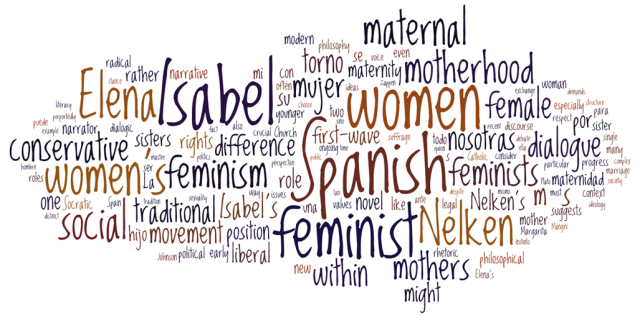As any professor, graduate student, or postdoc knows, publishing an article in an academic journal is not a particularly enjoyable process… and it can take months, if not years, to see your article in print once accepted and revised. Knowing this, I wanted to send something off early in the year to better my chances at a more productive 2014. Back in January, at the beginning of the Spring semester, I decided to follow the recommendations of one of the National Center for Faculty Development & Diversity‘s “Monday Motivator” emails and set aside a minimum of 60 minutes each day – first thing in the morning – for academic writing. I managed to start by 6:15 am each day, thanks to two strategies: (1) I opened the word document of the piece I was working on the night before so it would be staring right at me when I sat at my computer, and (2) I got an automatic coffee pot that I set to start brewing at 5:45 am so I also had hot coffee rewarding me for getting out of bed!
I highly recommend both of these “techniques” – and the NCFDD’s Monday Motivators. I was able to maintain this morning writing schedule until my article draft was completed and sent off, which was about 5-6 weeks. Some days I would write for an hour, others for 2-3, depending on my level of “inspiration” and the other obligations I had that particular day. During the remainder of the semester I continued to write in the morning on this schedule, but only about 1-3 times per week instead of daily.
Now that I have completed the revisions the reviewers recommended for publication and have officially sent off my (hopefully) final draft, I decided to have some fun and used Wordle to make a Word Cloud of my article. At the conference I attended this summer in Santiago de Compostela, Spain, one of the presenters incorporated these clouds into her presentation and I found it a quite dynamic and visually appealing way to present her particular literary and textual analysis during a 15-minute panel presentation. She told me she had used Word It Out to create the clouds. I played around with both of these free tools and found that, for my purposes, I preferred Wordle (and I’ll explain a bit below). Below is the cloud generated from my 11,000-word article on a 1927 novel written by Spanish writer and activist Margarita Nelken, “Theorizing a Hybrid Feminism: Motherhood in Margarita Nelken’s En torno a nosotras“:

Word Cloud for my article, “Theorizing a Hybird Feminism: Motherhood in Margarita Nelken’s En torno a nosotras”. Made with Wordle
I found some of the benefits of using Wordle to be the following. After your cloud is generated, you can simply click on words to delete them if you so choose. For example, my paper was written in English but contained many Spanish citations; I chose to omit common Spanish prepositions and verbs like de, en, and es. I did the same in English with the, an, and to. With Wordle it is also extremely easy to manipulate the shape and color scheme of your cloud. Word It Out did not allow you to delete words in the clouds, and I found their tools for changing color to be much less user-friendly. My only complaint is that the Wordle Word Cloud is not available as an image file – you can neither copy the image nor download it from the website. Your cloud is publicly archived online and you receive a unique url to access it (though I had some problems copying this link). To make my image file (above), I simply made a screen-shot of my Word Cloud page, cropped it in Microsoft Word, then converted it to an image file in Office Picture manager.
I am considering using Word Clouds in my Introduction to Textual Analysis course this fall. Students write 4-5 relatively short papers for this course, and the goal is for them to communicate a complex analytic thesis in a concise manner. Word Clouds would help students see if the most dominant words in their papers are indeed supportive of and relative to their theses. Given that all students will respond to the same prompt, it would be an intriguing and revealing class activity to compare Word Clouds and theses. And the visuals would also make essays more interesting for the reader (aka, ME!); last semester I really enjoyed my students’ image selections, which I required, on their papers in my Women’s Literature seminar. You can see two examples of these assignments here and here.
Finally, for my interested readers, here is the abstract for this forthcoming article: “Theorizing a Hybrid Feminism: Motherhood in Margarita Nelken’s En torno a nosotras (1927)”, explores the complex feminist philosophy that comes to the fore in an overlooked novel [En torno a nosotras] written by Margarita Nelken, one of early twentieth-century Spain’s most vocal and polemic feminists. The analysis juxtaposes the novel with Nelken’s essays, La condición social de la mujer en España (1919) and La mujer antes las cortes constituyentes (1932), in order to encourage a hybrid interpretation of first-wave feminist thought in Spain. Specifically, this essay concentrates on the incorporation of maternity and motherhood into modern female identities. It provides a thorough examination of the debate, defense, and theorization of this traditional female role within a fictional dialogic novel by considering the implications of Platonic and Socratic dialogues. The resulting analysis argues for a reevaluation of first-wave Spanish feminism that takes into account both liberal and conservative tendencies.
Have you used Word Clouds in your classroom or for academic presentations? What tools are your favorites and why?















